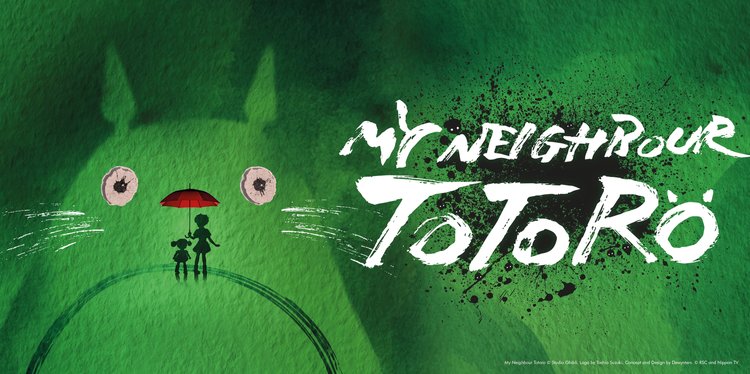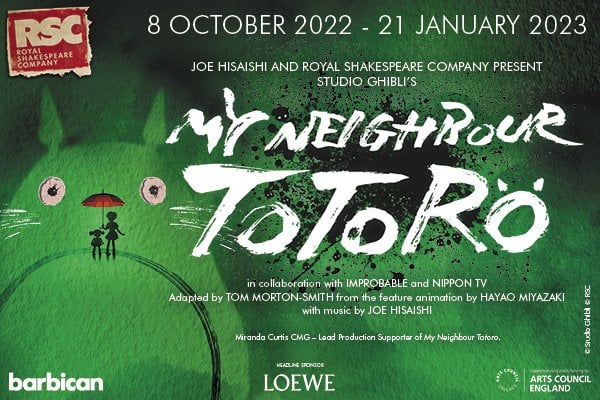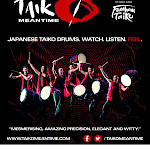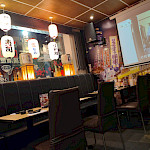27 Apr 2024
JETAA News

13th November 2022
My Neighbor Totoro, adapted for the stage by Tom Morton-Smith, Review
The Royal Shakespeare’s production of My Neighbour Totoro (となりのトトロ) is a love letter to Miyazaki’s animation, but realised with puppetry. The stagecraft is simply epic. From the opening animated credits (yes you read that right) with crawling insects to Oki-Totoro and an illuminated Catbus the production is simply brilliant. The story is brought to life by an astonishing set of puppeteers who are present on-stage
Bunraku-style but are equally capable of drifting off into the background like a summer breeze. I sat awestruck at the detail, care and just sheer fun that has been brought to the stage in this version of Miyazaki’s classic 1988 feature-length cartoon. What you think is unachievable on-stage is entirely possible, and if there is a third or fourth wall in theatre then it is absolutely smashed in this production. We’ve gone through the film screen. Thank goodness.
For those that don’t know the story, we are flung into 1950s rural Japanese life as sisters Satsuki (11) and Mei (4) move with their father to the country to be closer to their mother who is in hospital with an undisclosed illness. During this extraordinary summer, Mei encounters magical creatures and an ancient protector of the forest she calls Totoro. Satsuki doesn’t believe her little sister at first, but they are soon both swept up in exciting adventures with their new neighbours.

What sets this dramatization apart from the film is that if the original film had been live action, the play shows us what might have been going on behind the scenes as well as on-screen. And so, some scenes are purposefully polished, whilst others are left jokingly rough around the edges. The puppeteers exaggerate this tension alongside the staging as it deconstructs and moves and weaves with the audience immersed squarely within the action. At times we are aware the puppeteers are present, but even this is poked fun at. For example, the puppeteer team send themselves up whilst working a bus, as they have us laugh at the driver who overshoots the bus’s movement The puppeteers set the whole play
in motion, as they’re just having great fun. And why shouldn’t they as they have puppets produced by Jim Henson’s workshop. The puppets are not always cuddly however, the Barbican’s seats more than make up for this. Not only is there a hint of Alice in Wonderland anarchy in the puppets - like in the original film - but they can only have come from the makers of the Dark Crystal and the Muppet Show - which gives them an edge.
The production is part homage, part brilliant stagecraft, part puppetry and part archival revival. We are told in the programme that Miyazaki would only let the original composer and long-time collaborator Joe Hisaishi be executive producer. Cue Hasaishi, who not only has
pulled together an amazing team of diverse artists and all manner of puppeteers, but he has also clearly drawn upon soundscapes that were either made at the time of the original film or are wholly new. Some of the musical motifs appear familiar and it is not hard to imagine
many of the conversations that Hisaishi and Miyazaki had that influence the overall feel, pace and look of the play. This is surely why Miyazaki entrusted Totoro to Hisaishi. He was there at the time, he was core to the work and the music captured original sentiments. Hisaishi is best placed to revive the story for a new medium. And revive they have.
by Will Farr









